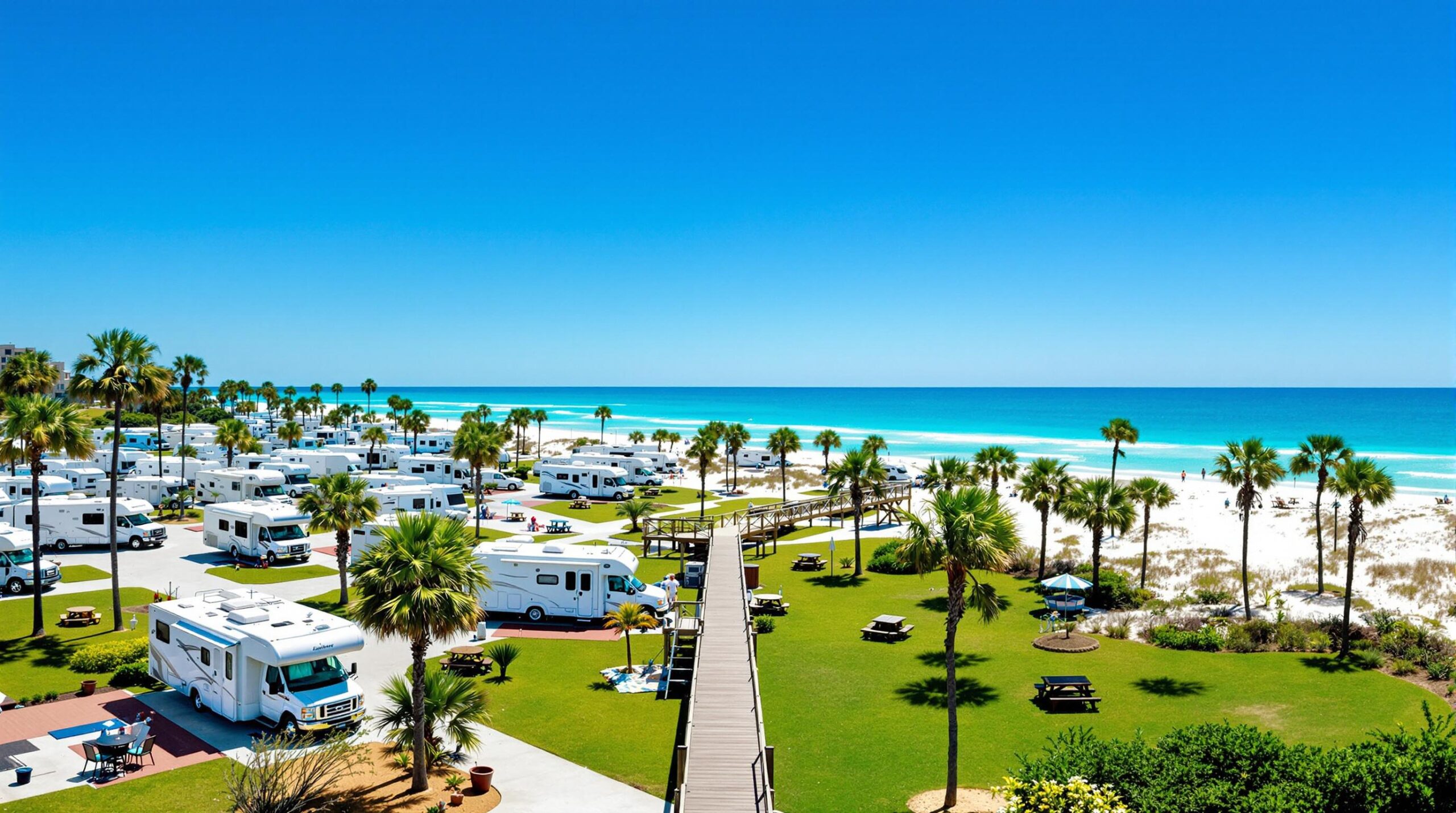Gulf State Park Campground has emerged as one of Alabama’s largest public RV destinations, packing 496 full-hookup sites just 1.5 miles north of the Gulf of Mexico’s sugar-white shoreline, a scale that positions the state-run property as a model for large-footprint campground operations, according to the state website.
The facility’s 496 paved pads deliver water, sewer and 20/30/50-amp electric service, while eight additional pads cater to tent campers. Most back-ins measure about 45 feet and pull-throughs about 65 feet, leaving generous room for big-rig slide-outs, according to the trail network.
Infrastructure mirrors the scale. All 11 bathhouses are modern and air-conditioned, with at least one newly equipped with an ADA-accessible shower, spread across the grounds. Each pad comes with a picnic table and pedestal grill, and above-ground fire rings are allowed. The office operates from 7 a.m. to 7 p.m., with 2 p.m. check-in, 11 a.m. check-out and emailed gate codes for late arrivals, as outlined on the policy page.
Amenities span a swimming pool flanked by a splash pad, tennis and pickleball courts, horseshoe pits, sand volleyball, a lake-view playground, coin-operated laundry and a camp store stocked with groceries, firewood and RV supplies. A Nature Center exhibits native wildlife and hosts interpretive programs year-round, according to the state website.
Outdoor enthusiasts can step directly onto the Hugh S. Branyon Backcountry Trail, an over 28-mile paved system that winds through nine coastal ecosystems, as described in the trail network. Seasonal guided hikes and pickleball tournaments lengthen average stays.
Registered campers receive a pass that waives parking fees at the Gulf State Park Beach Pavilion and the adjacent fishing pier, the longest fishing pier on the Gulf of Mexico, according to dottingthemap.com. The campground also borders Lake Shelby, where kayaking and paddle-boarding are encouraged, though personal jet skis are prohibited. State and local crews are building pedestrian and bike bridges over Alabama Highway 182 to simplify beach crossings, according to the same source.
Running a property this size takes more than asphalt and hookups. Many large parks now treat property-wide Wi-Fi as a core utility, layer cloud-based reservation software with dynamic pricing and automated wait-lists, and use mobile portals that let guests buy ice, firewood or late checkout from a phone. License-plate recognition or RFID gates shorten entry lines, while QR-code trail maps with real-time bathhouse occupancy trim radio chatter.
Operators are also turning to sustainability measures that lower costs and appeal to eco-minded travelers. Solar carports can offset bathhouse electricity, native plantings reduce irrigation, and permeable pavers limit storm-water runoff. Grey-water irrigation, motion-sensor LEDs and a few Level-2 EV chargers near the store further protect the environment while trimming utility bills.
Gulf State Park posts wildlife advisories about alligators near water and encourages guests to “buy it where you burn it” to keep invasive pests out of the firewood supply. A new online reservation platform is in calibration, with phone help available 8 a.m. to 4 p.m. at 251-948-7275, ext. 1, as noted on the policy page.
Travelers routinely praise the campground’s cleanliness, spacious pads and sunset boardwalk views, as seen in visitor reviews. A student-painted mural at Bathhouse 1, created by Gulf Shores High School art classes, has become an Instagram favorite, according to the state website.
For owners and managers of outdoor-hospitality businesses, the park illustrates how recreation, technology and stewardship can coexist at nearly 500 sites without sacrificing guest experience or operational efficiency.
As demand for coastal camping rises, Gulf State Park Campground’s blueprint—wide pads, deep amenity lists and forward-leaning management tools—shows how public or private operators can deliver a seamless Gulf Coast getaway while safeguarding the very ecosystems that draw travelers in the first place.


